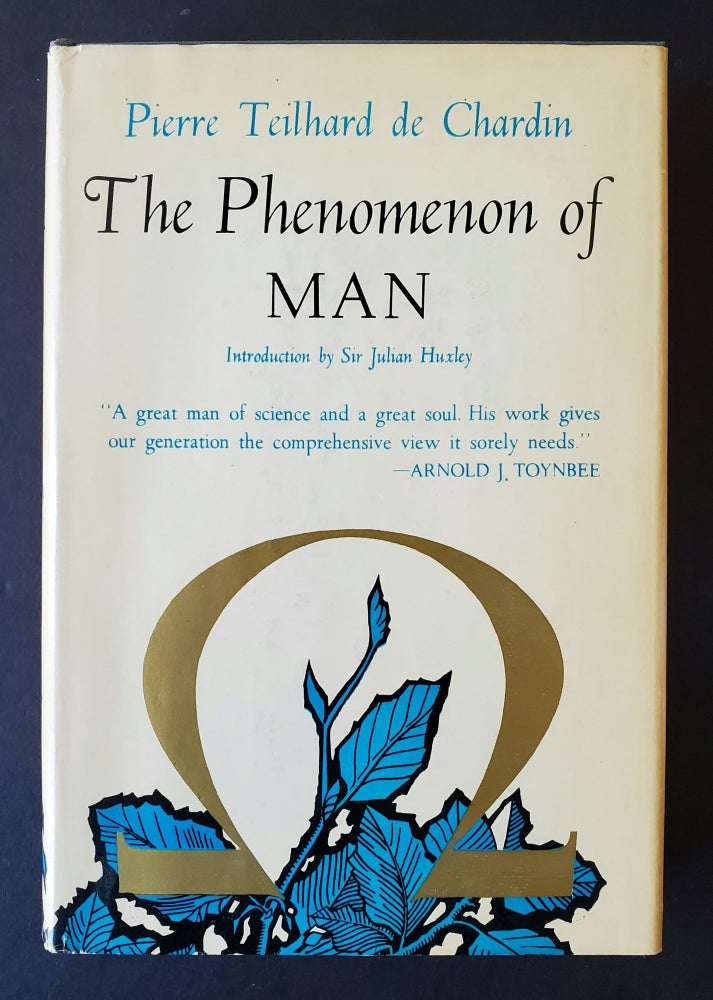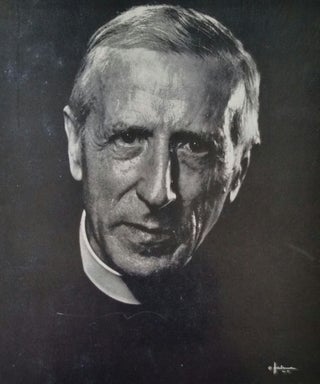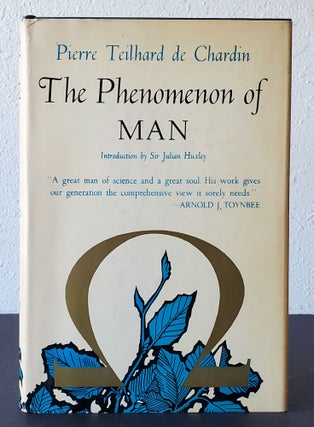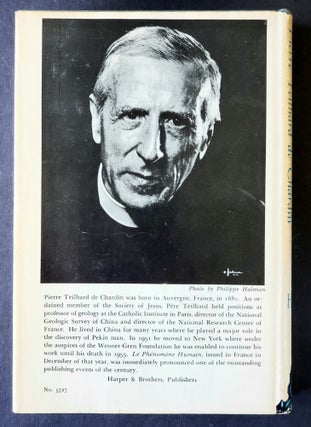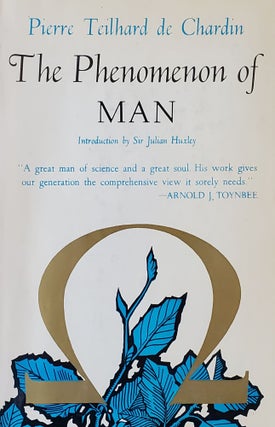The Phenomenon of Man
Westminster, Maryland: Harper & Brothers, [1959]. Octavo, original blue cloth, original dust jacket. Mild staining to cloth boards but lettering still bright, slight toning to spine of the clean, unclipped dust jacket. Very good indeed. Item #893
"ALONE, UNCONDITIONALLY ALONE IN THE WORLD TODAY, CHRISTIANITY SHOWS ITSELF ABLE TO RECONCILE, IN A SINGLE LIVING ACT, THE ALL AND THE PERSON"
Scarce early printing of the first English translation of The Phenomenon of Man, Teilhard de Chardin's equally influential and controversial opus. Complete with the Omega dust jacket designed by Guy Fleming, with Philippe Halsman's photograph of Teilhard on the back panel. All early printings are scarce.
Forbidden by the Church hierarchy from publishing or teaching during his lifetime (due to his suspect views on evolution) the French Jesuit spent years in exile in China. In 1948, a very small number of copies of the manuscript were printed privately in Rome while Teilhard sought ecclesiastical approval to publish. The approval was never granted, and the Phenomenon of Man remained unpublished until after Teilhard's death in New York on Easter Sunday 1955. The work consists of four main sections preceded by a brief Preface (dated “Paris: March 1947”) and a Foreword: Book One. Before Life Came, Book Two. Life, Book Three. Thought, Book Four. Survival. The text concludes with an Epilogue: The Christian Phenomenon (dated “Peking, June 1938-June 1940”) followed by a Postscript: The Essence of the Phenomenon of Man. Appendix. Some Remarks on the Place and Part of Evil in a World in Evolution. The text includes four diagrams. Translated by Bernard Wall, with his brief Translator's Note discussing Teilhard's many neologisms and providing a glimpse ("the author's style is all his own") of the herculean task of preparing the text for an English-speaking audience. Chief among the neologisms was Teilhard's visionary concept of the "noosphere"—an electromagnetic "thinking layer" of the biosphere uniting human consciousness on a global scale.
The evolutionary biologist, Sir Julian Huxley provided a lengthy Introduction (dated “London, December 1958”) but even in death controversy followed Teilhard as contemporary scientific reviewers were often hostile and the Vatican continued to view his work with suspicion. The ecclesiastical disapproval continued for years but, with the triumph of the digital age, many have begun to view his vision of the noosphere as prophetic, leading to a new appreciation of Teilhard in the Church. In recent years Teilhard has been quoted approvingly by both Pope Francis (in Laudato Si) and Pope Benedict XVI. In 2009, speaking of Teilhard’s meditation on the Epistle to the Romans ("St. Paul writes that the world itself will one day become a form of living worship"), Benedict referenced the Phenomenon of Man: "It's the great vision that later Teilhard de Chardin also had: At the end we will have a true cosmic liturgy, where the cosmos becomes a living host." Early printing: with "Seventh Printing / $5.00" on inner jacket flap and Harper's publication code E-L (May 1961).
Price: $75.00

